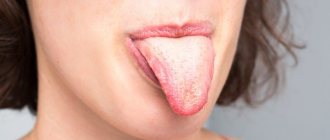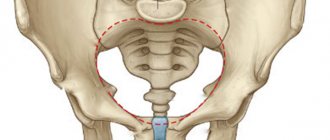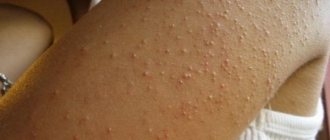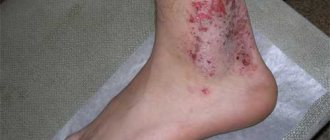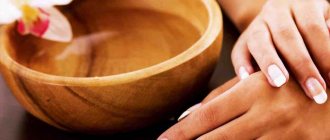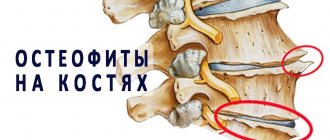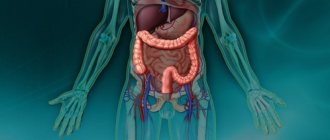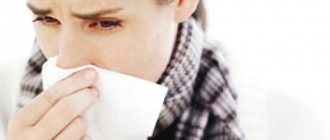20.12.2016
Sometimes fungi begin to multiply in the oral cavity of an adult, and thrush is very common in a month-old baby and in babies up to one year old. Externally, these mushrooms look like a white coating. Many mothers do not pay attention to this, thinking that the white coating is the remains of formula or breast milk that the child did not have time to swallow or otherwise regurgitated. But often such plaque indicates the development of thrush in a child.
There is an opinion among the people that the appearance of white plaque is promoted by breast milk or formula, since at 1 year of life the child eats only this, but this is not so. The phenomenon is based on a yeast-like fungus from the genus Candida, which is why doctors call this disease candidiasis.
Causes of thrush
The causes of thrush depend directly on the age of the child.
In newborns:
- the disease can be transmitted by the mother during childbirth or during breastfeeding;
- relatives or family members with candidiasis who do not maintain proper personal hygiene can infect a baby;
- due to the fact that the newborn does not yet have a stable immune system, the properties of saliva change. The mucous membrane of the oral cavity often dries out due to the dry air in the room;
- poor quality washing and sterilization of bottles and pacifiers;
- when the baby often burps, a comfortable zone for fungal growth is formed in the oral cavity;
- in newborn girls, thrush can be caused by somatic diseases and infection with the Candida fungus during the perinatal period;
- According to statistics, thrush occurs in premature babies;
For a one-year-old child:
- this is incorrect or insufficient oral hygiene, washing children's dishes and pacifiers;
- transmitted to a healthy baby from a sick child if: eating from the same plate, drinking from the same cup, sucking on the same pacifier, or from toys that children like to lick;
- reduced immunity of the baby;
- due to frequent use of medications or antibiotics that affect the immune system;
- problems with the gastrointestinal tract, diabetes mellitus, chronic tonsillitis, bronchitis, pneumonia and other diseases can cause the appearance of candidiasis;
- fungi can develop in injured areas of the mucous membrane;
- excessive consumption of sweets.
Stages of treatment for infantile thrush
The medical name of the disease - candidiasis, or candidal stomatitis - comes from the name of the fungus that causes it (Candida albicans), which to one degree or another is present in the body of most people, but manifests itself only in certain, favorable conditions. For example, with low human immunity.
The detected whitish coating in the child’s mouth should cause concern. If at the beginning thrush does not cause any particular reaction in him, then over time, in the absence of proper measures, it will be very disturbing, since it usually develops severely.
The sequence of treatment largely determines its success:
- Cleaning the oral cavity. To clean a child’s inflamed oral cavity, it is better to use a sterile cotton ball, moistening it with a weak aqueous solution of potassium permanganate, a one percent solution of hydrogen peroxide, a one to two percent aqueous solution of tannin, or 0.25 percent borax.
- Treatment with antiseptic solutions. Inflamed areas that open after cleaning the oral mucosa should be lubricated with a 1-2% hydro solution of aniline dye, sold by state pharmacies that have their own laboratories. For example, gentian violet, Lugol's aqueous solution in proportions of 1/3 or a 0.25 percent solution of silver nitrate. Treatment should be carried out daily every 2-3 hours, no more than five times.
- Application of antifungal drugs. A nystatin suspension can be applied to the affected areas of the oral cavity, for which one crushed tablet is dissolved in slightly warm water. They also use fenistil, an antihistamine gel, lubricating the area around the mouth with it, preventing it from getting into the child’s mouth and eyes.
The yeast fungus of the genus Candida, which causes thrush, is constantly in the environment and inside the body of each of us. Under normal conditions, Candida coexists well with humans. When the state of health changes or due to a lack of formation of organs and systems (in early infancy), the fungus begins to actively parasitize, that is, to live at the expense of the host.
Signs of thrush
As a rule, the symptoms in infants are clear, which allows the mother to immediately detect the disease. Symptoms depend on the form of the disease.
Mild thrush in a child:
- White spots, similar to cottage cheese, appear in the area of the tongue and the inside of the cheeks;
- easy to clean with a cotton swab;
- does not create a special odor;
- such thrush does not cause discomfort to the child.
Moderate thrush in babies:
- you can observe not only cheesy spots but a continuous coating;
- localized on the tongue, inner cheeks, upper palate and lips;
- when the mother tries to remove the plaque, she may notice bruises, but the plaque itself cannot be completely removed. Doctors do not recommend doing this, as you can severely damage the mucous membrane, which in turn can lead to unpleasant consequences.
Severe form of thrush:
- the coating is continuous and dense;
- affects the entire oral mucosa;
- It is impossible to remove the plaque.
In all cases, the baby is restless and does not eat well.
As soon as you notice the symptoms of thrush, try to determine the cause of the disease and do not hesitate to go to the doctor.
Symptoms
The main symptom of thrush is a white coating on the tongue . Then small white spots appear on the mucous membrane: palate, cheeks, gums. If you remove this plaque, you will see redness there.
The child begins to be capricious and does not suck well at the breast or bottle, because he feels severe pain while sucking. After some time, small spots begin to grow, and a curd-like coating forms.
Sometimes thrush can be confused with milk residues in the mouth, but if you try to remove the plaque with a teaspoon, it will look like curdled pieces, and the mucous membrane will remain inflamed. The remaining milk disappears on its own after some time.
At an early stage, the disease may not bother the baby, but then he becomes restless and this already indicates that it is time to begin treatment for thrush.
Acute and chronic candidiasis in children under one year of age
In a newborn baby, thrush is often acute rather than chronic. Indicators of chronic thrush are severe illnesses of the child and their symptoms.
At the acute stage of development, the mucous membrane in the oral cavity dries out and plaque forms. It consists of food residues, yeast, protein and epithelial cells, and can be removed quite easily. Depending on how quickly the disease develops and the area affected by fungi increases, the baby begins to experience discomfort.
When thrush is chronic, the coating on the tongue and the inside of the cheeks becomes brown or yellowish. The affected area begins to itch and pain appears. The mucous membrane of the oral cavity swells.
Factors that lead to the development of the disease
- reduced immune defense, including innate;
- various types of infections;
- taking antibiotics and hormonal drugs;
- food with low-quality, often excessively sweet, mixture;
- frequent regurgitation, because harmful fungi multiply very quickly in an acidic environment;
- ignoring basic hygiene standards: treating the breast before feeding, sterilizing nipples and bottles.
Thrush in the mouth of a child is characterized by several pronounced symptoms. The article discusses in detail various drugs for the treatment of this disease.
This infection is transmitted both through ordinary household and airborne transmission. And even in the womb, if she was diagnosed with untreated urogenital thrush.
- Initial, when whitish grains appear on the tongue. They can be easily removed with a cotton swab. The child practically does not feel the disease.
- Mild, characterized by slight redness of the surface of the mucous membrane, in rare cases - the appearance of a cheesy coating, an attempt to remove which can cause bleeding and pain in the baby. However, in most cases, this stage of infantile thrush is quite easy to treat.
- Medium - a cheesy coating completely covers the oral cavity, small ulcers form under it, often bleeding. Cracks appear in the corners of the lips. It is clear that the child reacts painfully to all these things, especially when feeding, and therefore often refuses to eat.
- Heavy. The ulcers bleed intensely. The entire oral cavity and pharynx are covered with plaque, and gradually it moves to the corners of the mouth, where ulcers appear. The disease is accompanied by the proliferation of submandibular lymph nodes. The baby is in great pain, he is worried, crying, and his temperature is rising.
A severe or acute form of thrush in a child’s mouth, if you don’t worry about how and how to treat it in time, can become chronic, when the lymph nodes thicken even more and the plaque turns brown. Pain and swelling intensify. At this stage, the disease can spread to other organs.
Among them:
- a decoction of medicinal plants: St. John's wort, calendula, chamomile, oak bark, sage (a tablespoon of each is poured with a glass of boiling water, allowed to cool) perfectly fights fungal plaque in the oral cavity. However, when processing it is necessary to use as little of it as possible, since ingestion can cause an allergic reaction in the baby;
- aloe juice It is bitter, and therefore the baby will certainly take it with hostility, but the method of cleaning the mucous membrane with its help is very effective;
- a mixture of honey and raspberry juice. To prepare it, you need to take them in equal quantities and boil them three times. The cooled mixture is applied to the affected areas of the oral cavity. True, the attitude of doctors towards this method is ambiguous; many reject it, although it is quite widespread. They are motivated by the fact that both raspberry juice and honey contain substances that can, under certain conditions, worsen the clinical picture. Moreover, not all children can tolerate honey;
- already known solution of baking soda, which is used to lubricate inflamed areas every 2-3 hours.
All kinds of infusions and decoctions of medicinal herbs can help prevent allergic reactions, improve immunity, wound healing and anti-inflammatory measures.
Keep in mind that for infants these products are used with great caution - mainly only as baths for bathing and only in diluted form.
For 1 tablespoon of each herb, take 1 glass of water. Place the dry food in a clean liter or 0.75 l container. jar and fill it with boiling water. Close the lid tightly and wrap the jar in a towel or blanket for 35-40 minutes. Strain the infusion and cool. Use freshly prepared for baths and washes.
Diagnosis of thrush
Candidiasis in infants has a special appearance; experts will not confuse it with another disease.
To diagnose thrush, doctors look for:
- Smell. Thrush in a baby has an unpleasant odor, and it can be removed without effort.
- Temperature. With thrush, the temperature is no more than 37.5 degrees, sometimes it is absent.
As soon as parents notice symptoms indicating thrush, the first thing they need to do is take the child to a pediatric dentist or local pediatrician. To make a diagnosis, it is enough to examine the oral cavity. The doctor prescribes taking a smear from the oral mucosa. Then bacteriological and microscopic examination to establish the type of fungus, as well as determine its sensitivity to medications.
Features of the treatment of thrush in the mouth after taking antibiotics
It is quite easy to distinguish fungal infections from food debris. Traces of milk disappear over time, and spots only grow with disease. They appear on the mucous membrane of the gums and tongue, causing discomfort and pain to the baby.
The clinical picture of thrush can be seen in the photo above. It is difficult to confuse it with something else:
- white plaque in the mouth and tongue is difficult to remove with a finger;
- the plaque has a sour smell;
- absence of high temperature (maximum – 37.5).
Thrush in children's mouths will not go away on its own; it will only progress, interfering with the development and normal well-being of the baby. If you suspect signs of illness, your mother should rush to the pediatrician or pediatric dentist. The specialist will conduct bacteriological studies and prescribe appropriate therapy.
In order to prevent thrush, you should first of all take care of strengthening the immune system. This is much more difficult when the need to take antibiotics arises and the body loses both its natural defenses and a lot of beneficial microorganisms. In this case, the treatment of thrush should be approached especially carefully.
It is usually a combination:
- mandatory pre-treatment of the affected oral cavity with the same solution of soda or potassium permanganate. Immediately after the procedure, spraying the inner surface of the cheeks, gums and tongue with Miramistin in the form of a spray;
- taking Nystatin tablets (usually in combination with antibiotics, but you can do them alone). The dose and duration of treatment is determined by the doctor, guided by the severity of the disease and the age of the young patient;
- after meals (no more than four times daily), apply Cholisal gel to the diseased areas of the mucous membrane, which will not only disinfect them, but also numb them, because the drug has an anesthetic effect.
- Linex is a probiotic in capsule form containing live bacteria. For children under two years old, the contents of the capsule are divided into 3 doses and dissolved in water. Children three years of age and older can be given 1 capsule per day as a whole.
- Bifidumbacterin is also saturated with live bacteria and is available in different forms: powder, substance in ampoules or capsules. The pediatrician will advise what is preferable in a particular case. More often, parents use a liquid concentrate without dissolving or diluting it first. Babies up to one year old are given 1 ml, from one to three years old - 2 ml, older ones - 2-3 ml.
- Trilact in the form of an emulsion is taken orally, and it can be given to children over 1.5 years old. Only the doctor can decide whether to prescribe it for a younger child. The usual dose for two-year-olds is 1.5 ml; 3-7 years – 2.5 ml, always 1 time before breakfast.
How to treat thrush in infants?
There are many ways to cure thrush.
1. One way to remove plaque is to treat the baby’s oral mucosa with special solutions. This procedure is best carried out with a cotton swab, very carefully, after each meal. What solutions should I use?
- weak solution of potassium permanganate;
- soda solution. Add one teaspoon of soda to a glass of warm water (boiled);
- tannin solution;
- hydrogen peroxide diluted with water;
- clotrimazole solution
2. Proper hygiene.
- Each feeding must be completed by rinsing the mouth with plain water;
- Treat the bottle nipple or pacifier with a soda solution before each use. After use, boil or sterilize. Instead of a soda solution, you can make a chamomile infusion.
If you have a one-year-old child, then try to sterilize all objects that he might put in his mouth.
- Among medications, it is recommended to use fluconazole, diflucan, diflazone, or medications that contain clotrimazole. All these medicines are powdered and must be mixed with breast milk or formula.
Treatment for thrush in infants lasts for two weeks, even if the symptoms of the disease no longer appear. If treatment for thrush in infants is not completely completed, candidiasis is likely to return again.
When thrush develops into a severe stage and the prescribed treatment does not produce positive results, doctors may insist on inpatient treatment, where the baby will be given antifungal drugs intravenously.
Prevention
To prevent your child’s thrush from becoming severe within a month and requiring serious treatment, follow a few rules:
- If you are breastfeeding, wash your breasts with warm water before each meal. Underwear must be clean;
- if the child is bottle-fed, then regularly boil the baby’s pacifier, pacifier and dishes;
- wash your hands, change bedding and wash toys more often;
- Be careful not to get your saliva into your baby's mouth. This can happen if you lick a pacifier, spoon or pacifier.
After eating, invite your baby to drink boiled water from a spoon. Thanks to this, food debris will not remain in the mouth, which in turn will not help the fungus to develop.
Modern methods of combating candidiasis
We know the causes and symptoms of the disease, now it’s time to find out how to treat thrush in newborns. After all, treatment is the most responsible and important moment. Pediatricians, along with the popular Dr. Komarovsky, agree on one idea: it is not necessary to treat children for candidiasis in the first months of life with the help of special antifungal medications. As a basis for treatment, it is necessary to take the goal of eliminating external factors that could provoke the active growth of Candida fungus.
Treatment may simply consist of neutralizing the dryness of the oral mucosa and returning it to a normal state (waiting for the cracks to heal). But all professionals agree that you shouldn’t just hope for a miracle. In any case, you need to come to see a doctor and discuss all the nuances. Indeed, in case of problems with immunity, it may be necessary to structure treatment differently. Be attentive to the health of the young mother and the well-being of the baby. Remember that qualified help from a specialist is a hundred times better and more effective than hundreds of folk recipes and self-medication.
Candidiasis and its consequences
Thrush in infants appears in the form of a greasy, rough plaque and spots with inflammatory processes form under it. If the mucous membrane is severely damaged, the spots begin to bleed, which is very dangerous; serious infections can occur through this blood.
If the disease starts, the oral cavity begins to become covered with a film, which can later spread to the surface of the throat from the inside. Lips and gums begin to crack and bleed. It becomes painful for the baby to swallow and suck, he may refuse the breast or pacifier, and sometimes the temperature rises.
Stages of development of candidiasis
Doctors divide the course of a fungal infection into several stages: 1. During the first days or weeks, Candida does not cause the development of unpleasant symptoms. During this period, fungi are just beginning to multiply. The tongue may become covered with reddish spots, which later turn into white formations. Lack of treatment at the initial stage contributes to the further development of the disease. Previous use of drugs based on chlorhexidine and nystatin allows symptoms to be relieved in a short period of time. Often, folk methods and adherence to hygiene rules help to remove signs of infection at the initial stage. 2. At the next stage, a white coating forms. When you try to remove it, ulcers appear, which cause significant discomfort. The child experiences pain during sucking, which leads to breast refusal. 3. The third stage is characterized by a severe course of the disease. In the absence of fungicidal treatment and antibiotic therapy, candida causes damage to the entire oral cavity and nasopharynx. The baby's temperature rises, severe weakness, lethargy appears, and digestion is disrupted. To prevent undesirable consequences, it is necessary to conduct examination and therapy with antifungal medication.
Useful tips
- Before giving your baby a pacifier or pacifier, rinse them in a soda solution;
- Boil the bottle and pacifier regularly, and also try to sterilize your baby’s favorite toys, as well as toys that he can put in his mouth.
- If your baby is diagnosed with thrush and treatment is prescribed, then get treated with him.
- If the baby is breastfed, then before feeding, treat the nipples with a solution of soda or honey.
If all the rules are followed and treatment for thrush in an infant is started on time, the signs of the disease disappear in less than a week. But in any case, treatment for thrush in children must be completed, even if the baby does not show any signs, then you will be absolutely sure that thrush will not return again.
Diagnostic measures
The specificity of symptoms allows you to quickly diagnose candidiasis and begin treatment. Blood and urine tests are of particular importance, as they help identify changes in the body. If high glucose levels are detected, consultation with an endocrinologist is required.
To study cheesy formations, the PCR (polymerase chain reaction) method is used. Microscopy is performed if there are signs of complications. Visceral candidiasis helps diagnose the agglutination reaction. This method allows you to detect fungi in serum, urine and other liquids.

